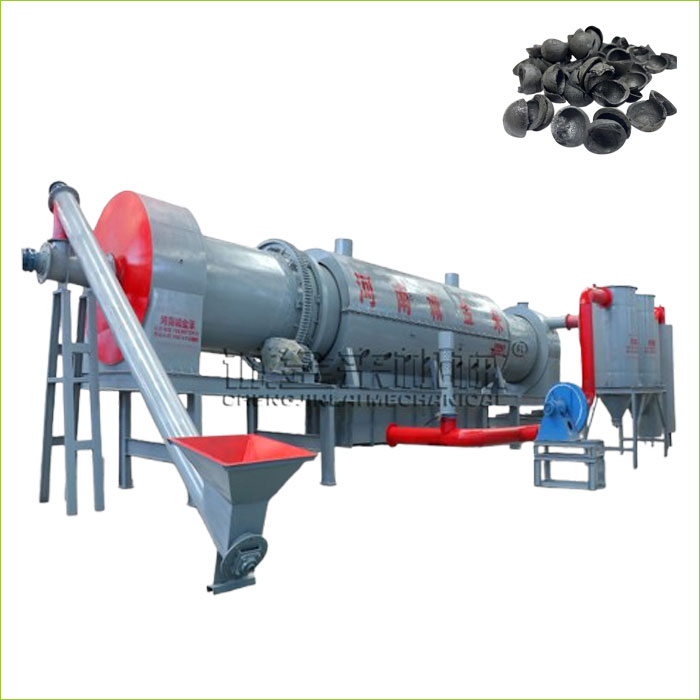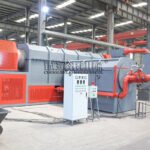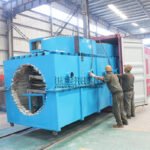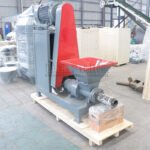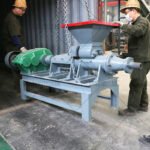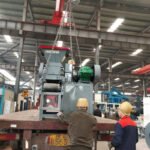Coconut shell activated carbon is a powerful adsorbent used in water purification, air filters, and gold recovery. Unlike regular charcoal, it has a highly porous structure. This makes it ideal for trapping impurities efficiently.
Why Choose Coconut Shells?
Coconut shells create high-quality activated carbon with superior hardness and porosity. They are also renewable, unlike coal-based alternatives. Many industries prefer them because they produce less ash and burn cleaner.
Additionally, coconut shells are widely available in tropical regions. This keeps raw material costs low for manufacturers.
Coconut Shell Activated Carbon Manufacturing Process Key Steps
1. Raw Material Preparation
First, coconut shells are cleaned to remove dirt and fibers. Next, they are crushed into small, uniform pieces. Proper sizing ensures even carbonization later.
2. Carbonization
The shells are heated in a low-oxygen environment (pyrolysis). This removes volatile compounds, leaving pure carbon. Temperatures between 600-900°C work best.
3. Activation
Now, the carbonized shells undergo activation. Steam or chemicals create millions of tiny pores. This step boosts adsorption capacity significantly.
4. Washing & Drying
Finally, the activated carbon is washed to remove residues. Then, it’s dried and ready for packaging.
A modern coconut activated charcoal plant automates the entire process. This reduces labor costs and improves product consistency.Moreover, these plants meet international quality standards. They help businesses scale production for global demand.Here is the coconut activated charcoal plant equipment lists:
- Crusher (for shell sizing)
- Carbonization furnace
- Activation reactor
- Storage silo
- Lifting device
Coconut Shell Activated Charcoal Manufacturing Process Tips For Optimal Production
1. Raw Material Selection
- Use only fully matured coconut shells (12+ months old) – they have higher lignin content, yielding 25-30% more carbon than young shells.
- Avoid moldy or decomposed shells – they reduce adsorption capacity and may contaminate batches.
- Pre-clean shells to remove sand/soil – impurities increase ash content beyond the 3% industry limit.
Pro Tip: Source from local coconut oil mills for consistent, low-cost supply.
2. Precision Crushing & Sizing
- Crush shells to 4-10mm particles – too large slows carbonization; too fine reduces structural integrity.
- Use a rotary sieve to remove undersized powder – fines clog reactors and lower product density.
Equipment Hack: Install a magnetic separator post-crushing to catch metal fragments from husking tools.
3. Controlled Carbonization
- Optimal temperature range: 600-750°C in the pyrolysis furnace – higher temps destroy pore structure.
- Limit oxygen strictly (<2%) to prevent combustion – use nitrogen purging for premium-grade carbon.
- Monitor smoke color: Blue flames indicate proper volatiles removal; yellow smoke signals incomplete carbonization.
Energy Saver: Capture pyrolysis gases to fuel the furnace (cuts energy costs by 40%).
4. Activation Process Mastery
- Steam activation (800-950°C) is cleaner than chemical methods for food/pharma grades.
- Critical activation time: 45-90 minutes – shorter fails to develop pores; longer burns off carbon.
- Test iodine number regularly – target 1000-1200 mg/g for most industrial applications.
Lab Tip: Use BET surface area analyzers to verify micropore dominance (>80% pores <2nm).
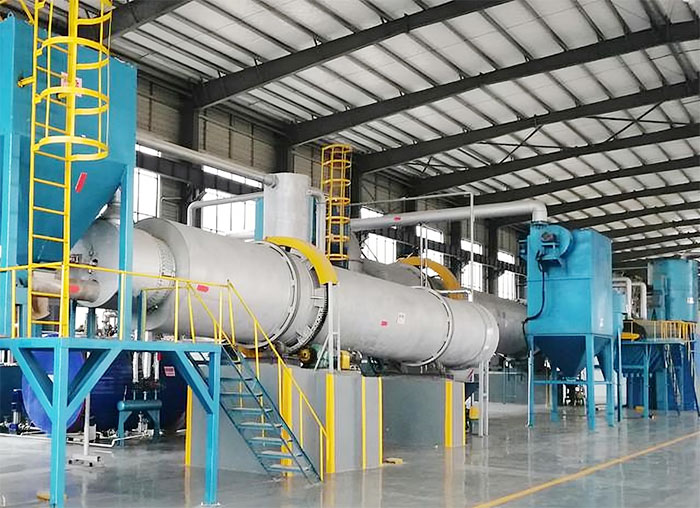
5. Advanced Washing Techniques
- Acid-wash (HCl/HNO3) if heavy metals are present – crucial for gold mining carbon.
- Deionized water rinse prevents mineral deposits that clog pores.
- PH testing – ensure final product is neutral (6.5-7.5) to avoid reactivity issues.
Water Hack: Install a closed-loop water recycling system to cut costs and meet environmental regulations.
6.Smart Drying Practices
- Sun drying works but risks contamination – rotary dryers at 105-120°C ensure uniform moisture (<5%).
- Avoid overheating – temperatures above 130°C may re-activate the carbon unpredictably.
Quality Check: Use moisture meters hourly during drying – variations cause packaging mold risks.
7. Tailored Product Grading
- Sieve into standard meshes:
- 4-8 mesh for gold recovery
- 12-30 mesh for water filters
- 200+ mesh for medical use
- Dedust with ultrasonic screens – fines below 325 mesh are wasted material.
Premium Pricing Trick: Offer “low abrasion” grades (HA grades) to mining clients for 15% higher margins.
8. Reactivation for Extra Profits
- Offer spent carbon reactivation services – mines and water plants pay 60% of new carbon price.
- Multi-hearth furnaces can reactivate 5-7 times before replacement.
Warning: Don’t reactivate carbon used in chemical applications – cross-contamination risks.
9. Real-Time Quality Control
- Automated sampling systems test every 500kg batch for:
- Iodine number
- Hardness (>95% minimum)
- Ash content (<3%)
- XRF analyzers detect hazardous heavy metals (lead, arsenic).
Certification Edge: Maintain ISO 9001 documentation to justify premium pricing.
10. Waste-to-Profit Strategies
- Carbon dust → Sell to brick manufacturers as combustion aid.
- Pyrolysis condensate → Distill into wood vinegar (sold as organic pesticide).
- Shell ash → Process into potassium-rich fertilizer.
Revenue Boost: These byproducts can add $50-120/ton to your bottom line.
The coconut shell activated plant is the heart of the operation. It integrates all steps into one efficient system.
Market Potential
The global market for coconut shell activated carbon is experiencing rapid growth, driven by tightening environmental regulations, industrial expansion, and increasing demand for sustainable filtration solutions. Here’s a detailed breakdown of key opportunities:
1. Surging Demand in Water Treatment
- Municipal & Industrial Wastewater Purification: Governments worldwide are enforcing stricter water quality standards, especially for heavy metal removal (e.g., lead, mercury). Coconut shell carbon is 50% more effective than coal-based alternatives in adsorbing contaminants.
- Drinking Water Systems: Home/office water filters and large-scale municipal plants increasingly use activated carbon. The global water purifier market is projected to exceed $100 billion by 2030 (CAGR 9.2%).
Key Opportunity: Supply to water treatment plants, bottled water companies, and household filter manufacturers.
2. Air Pollution Control & Gas Mask Production
- Industrial Air Filters: Factories (chemical, pharmaceutical, food processing) use activated carbon to capture toxic gases like VOCs and sulfur compounds.
- Consumer & Military Applications: Demand for gas masks (e.g., for firefighting, military, and pandemic preparedness) has spiked. Coconut shell carbon’s high micropore density makes it ideal for toxin absorption.
Key Opportunity: Partner with PPE manufacturers or industrial HVAC suppliers.
3. Gold Mining & Precious Metal Recovery
- Coconut carbon dominates the gold mining industry due to its hardness and abrasion resistance in CIP (Carbon-in-Pulp) processes.
- Rising gold prices (over $2,300/oz in 2024) drive demand from mines in Africa, South America, and Australia.
Key Opportunity: Target mining companies in resource-rich regions with high-purity, reactivable carbon.
4. Food & Beverage Industry
- Decolorization & Purification: Used in sugar refining, edible oil bleaching, and alcohol production (e.g., vodka, whiskey).
- Organic Certification Advantage: Coconut-based carbon is preferred over coal-derived products for organic food processing.
Key Opportunity: Supply to sugar mills, distilleries, and food additive producers.
5. Healthcare & Pharmaceuticals
- Medical-grade activated carbon is essential for poison antidotes, kidney dialysis machines, and drug purification.
- Post-pandemic stockpiling: Hospitals and governments are increasing reserves of medical adsorbents.
Key Opportunity: Certification (e.g., USP/EP) allows entry into high-margin medical markets.
6. Emerging Markets: Energy Storage & EVs
- Battery Production: Activated carbon is used in supercapacitors and lithium-ion battery electrodes.
- EV Boom: With the electric vehicle market growing at 25% CAGR, demand for high-purity carbon will rise.
Key Opportunity: Collaborate with battery manufacturers in China, Europe, or the U.S.
The coconut shell activated carbon market is far from saturation, with niche applications (e.g., hydrogen storage, cannabis extraction) emerging. By investing now, you position yourself as a supplier for multiple future-proof industries.
Final Thoughts
Turning coconut shells into activated carbon is both profitable and sustainable. With the right technology, waste becomes a high-value product. Ready to upgrade your production? Start by exploring reliable plant options today!
Key takeaway: Coconut shell activated carbon offers superior performance and eco-friendly benefits. Invest smartly for long-term success!






